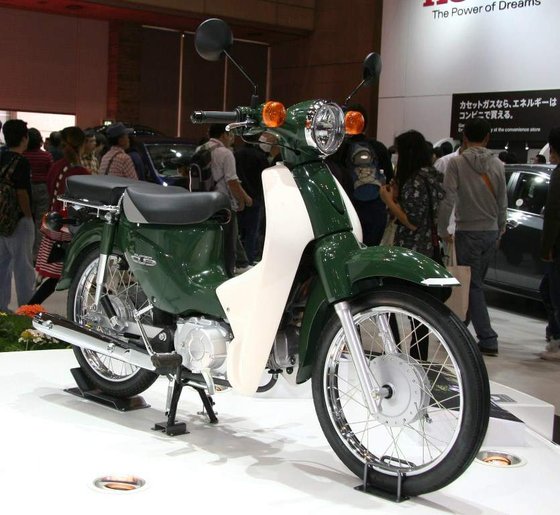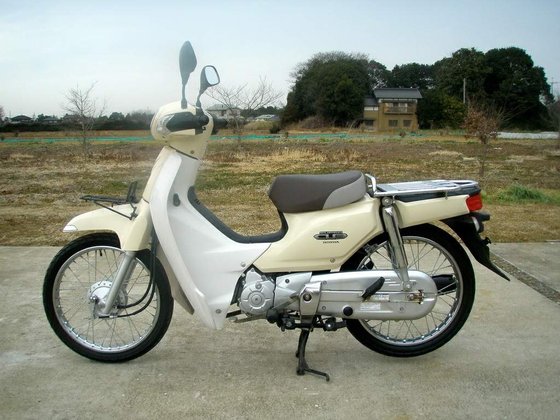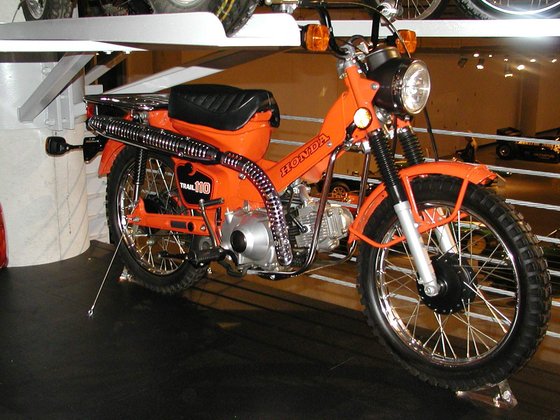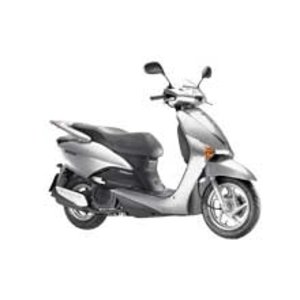Honda NHX 110 Lead (2008–2013) Review: The Urban Workhorse Reimagined

Introduction
The Honda NHX 110 Lead, produced between 2008 and 2013, represents a fascinating evolution of Honda’s legendary practicality. While it may not scream "icon" like the Super Cub, this scooter quietly perfected the formula of urban mobility for a generation of riders. Designed for crowded city streets, daily commutes, and effortless reliability, the NHX 110 Lead embodies Honda’s knack for engineering machines that just work. After spending a week with a well-maintained 2011 model, it’s clear why this scooter developed a cult following in markets like Japan and Southeast Asia—and why it still holds up today.
Design & Ergonomics: Function Over Flair

The NHX 110 Lead’s design is a masterclass in utilitarian simplicity. Its underbone steel frame, a nod to the classic Cub lineage, prioritizes durability over flashy aesthetics. The body panels are straightforward but well-fitted, with clean lines that age gracefully. At 1,835 mm (72.2 inches) long and a dry weight of 114 kg (251 lbs), it’s compact enough to weave through traffic yet substantial enough to feel stable at speed.
The 29.1-inch (740 mm) seat height is a highlight, accommodating riders as short as 5’2” without sacrificing legroom for taller pilots. The wide, lightly padded seat supports two adults comfortably—a rarity in this class—and the floorboard offers ample space for grocery bags or a small pet carrier. The analog-digital dash is basic but legible, featuring a speedometer, fuel gauge, and odometer. Storage is generous for a scooter, with a 22-liter underseat compartment that swallows a full-face helmet.
Color options ranged from subdued (matte silver, black) to playful (red, yellow), appealing to both practical commuters and style-conscious riders. The overall vibe? Think of it as the “reliable coworker” of scooters—unassuming but always dependable.
Engine & Performance: Silky Smooth Efficiency

At the heart of the NHX 110 Lead lies Honda’s 108cc liquid-cooled SOHC engine—a standout feature in a segment dominated by air-cooled mills. The liquid cooling system pays dividends in stop-and-go traffic, preventing the engine from gasping during summer gridlock. Paired with PGM-FI fuel injection (a rarity in 2008-era 110cc scooters), throttle response is crisp, and cold starts are drama-free.
Power figures are modest—8.9 HP (6.5 kW) @ 7,500 RPM and 9.3 Nm (6.9 lb-ft) of torque @ 6,250 RPM—but the V-Matic belt drive ensures seamless power delivery. Acceleration from 0–50 km/h (0–31 mph) is brisk, outpacing rivals like the Yamaha Mio. Top speed hovers around 90 km/h (56 mph), though the engine feels happiest at 60–70 km/h (37–43 mph).
What impresses most is refinement. The engine purrs at idle and stays vibration-free even near redline. Fuel efficiency is stellar: expect 40–45 km/l (94–106 mpg), translating to over 280 km (174 miles) from its 6.5-liter (1.7-gallon) tank. For urban riders, that’s a month of commuting between fill-ups.
Ride Experience: City Slicker Supreme
Swing a leg over the Lead, and its mission becomes clear: this is a scooter built for living, not posing. The riding position is upright, with wide handlebars offering leverage for tight U-turns. The 33mm telescopic fork and rear swingarm suspension soak up potholes better than expected, though sharp bumps can jolt through on cratered roads.
Braking is adequate but not thrilling. The front 190mm disc brake (with dual-piston caliper) provides confident stops, while the rear drum requires a firm stomp. ABS wasn’t an option, so wet-road riders should consider upgrading to aftermarket sintered pads from MOTOPARTS.store.
Handling is where the Lead shines. The 12-inch front wheel and 10-inch rear (shod with 90/90-12 and 100/90-10 tires) strike a balance between agility and stability. It flicks through traffic like a bicycle yet remains planted on highway ramps. At 114 kg (251 lbs), it’s light enough to muscle into parking spots but never feels flimsy in crosswinds.
Competition: How Does the Lead Stack Up?
In the 110cc scooter arena, the NHX 110 Lead faced stiff rivals:
- Yamaha Mio (2006–2013): Lighter (99 kg) and cheaper, but air-cooled and carbureted. The Mio feels sportier but struggles on long inclines.
- Suzuki Address 110: Similar weight and specs, but the Suzuki’s suspension is softer—better for comfort, worse for carrying cargo.
- Vespa LX 100: Stylish but heavier (113 kg) and pricier. The Vespa wins on prestige; the Lead dominates in practicality.
The Honda’s liquid cooling and fuel injection gave it an edge in reliability, especially in tropical climates. While competitors often required carb cleans or valve adjustments every 3,000 km, the Lead hummed along with minimal fuss. Storage capacity and seat comfort were also class-leading—a boon for riders using it as a daily driver.
Maintenance: Keeping Your Lead in Prime Shape
Owners praise the NHX 110 Lead for low upkeep costs, but neglect can bite. Key tips:
- Oil Changes: Use 10W-30 JASO MA2 oil every 4,000 km (2,485 miles). The engine takes 800ml with a filter change—easy DIY with MOTOPARTS.store’s oil change kits.
- Valve Clearances: Check every 8,000 km (4,970 miles). Specs: 0.16mm (0.006”) intake / 0.25mm (0.010”) exhaust.
- Tires: Stock pressures are 1.75 bar (25 psi) front / 2.0 bar (29 psi) rear. Upgrade to grippier tires like the Michelin City Grip for rainy seasons.
- Belt & Rollers: Replace the V-Matic belt every 20,000 km (12,427 miles). Worn rollers cause sluggish acceleration—swap in Dr. Pulley sliders for smoother engagement.
- Spark Plugs: NGK CR8EH-9 is standard, but the iridium CR8HIX-9 lasts longer. Gap to 0.8–0.9mm (0.031–0.035”).
Common upgrades include LED lighting kits, taller windscreens, and reinforced rear racks—all available at MOTOPARTS.store. The liquid-cooled engine tolerates aftermarket exhausts well, but keep modifications mild to preserve reliability.
Conclusion: Timeless Utility for the Modern Rider
The Honda NHX 110 Lead isn’t about thrills; it’s about mastering the mundane. For delivery riders, students, or urbanites seeking a no-nonsense commute, it’s a near-perfect tool. The liquid-cooled engine and fuel injection feel ahead of their time, and the chassis balances agility with Honda’s trademark solidity.
While newer scooters offer flashier tech, the Lead’s simplicity is its strength. With basic care, these machines easily surpass 50,000 km (31,000 miles)—and MOTOPARTS.store’s catalog ensures you’ll keep riding long after the odometer rolls over. Whether you’re restoring a barn find or daily-driving a weathered warrior, the NHX 110 Lead proves that sometimes, boring is brilliant.



















